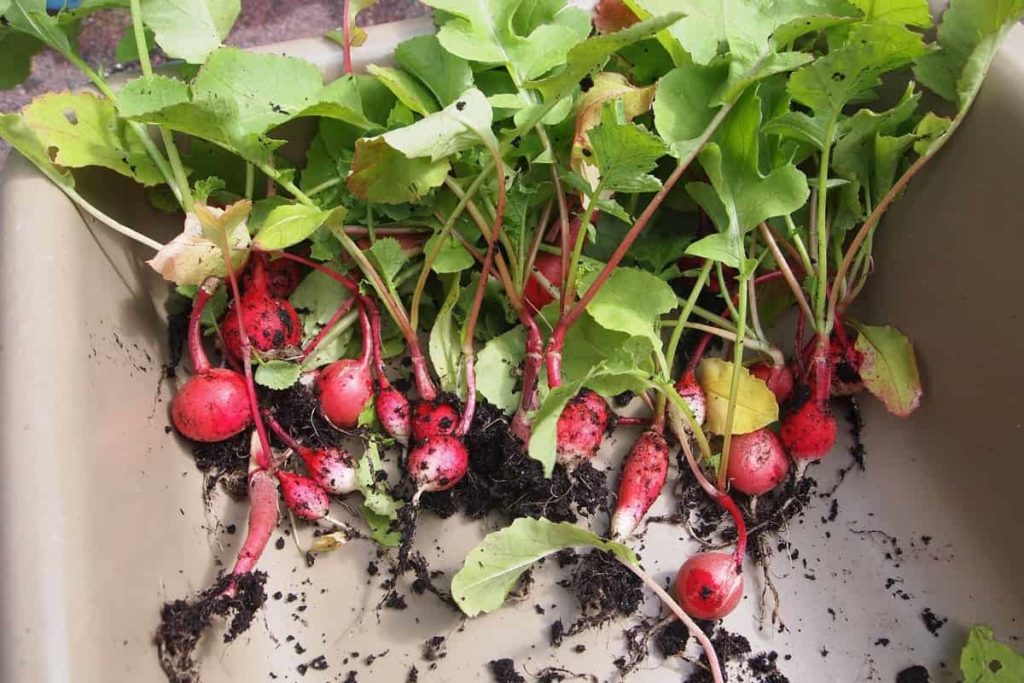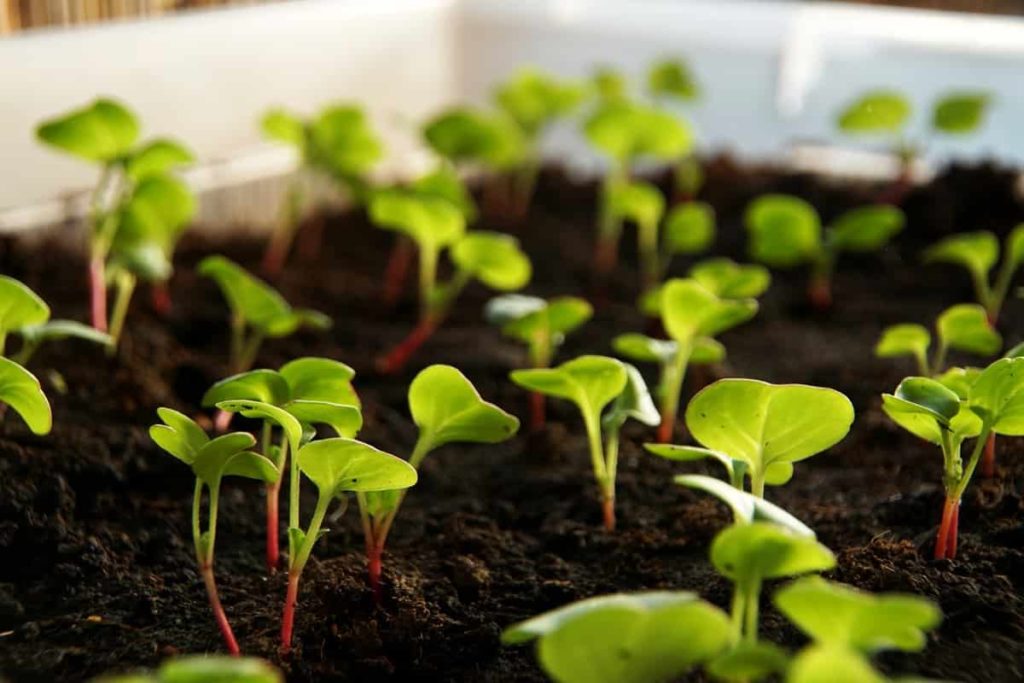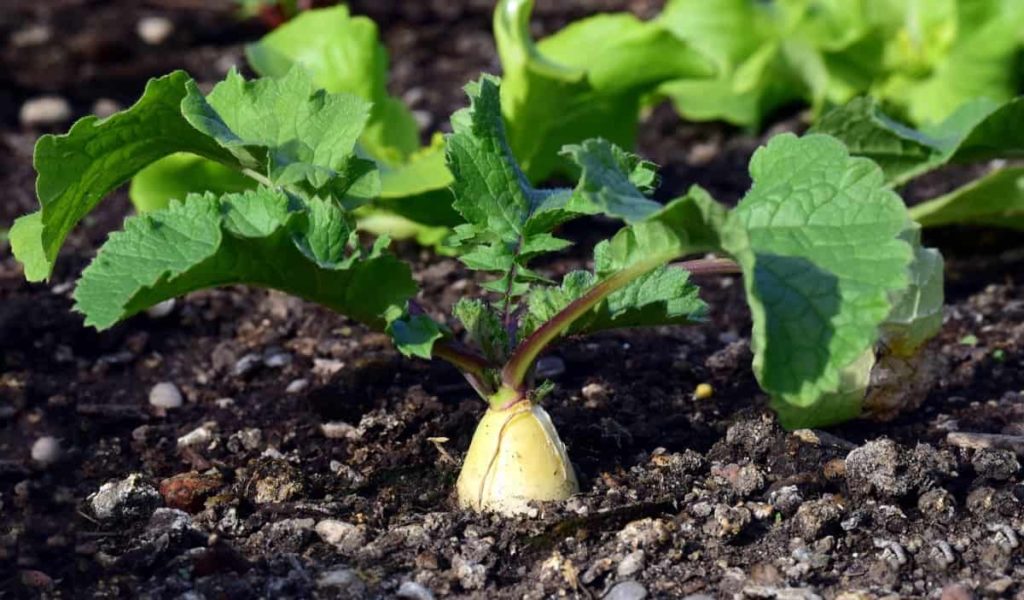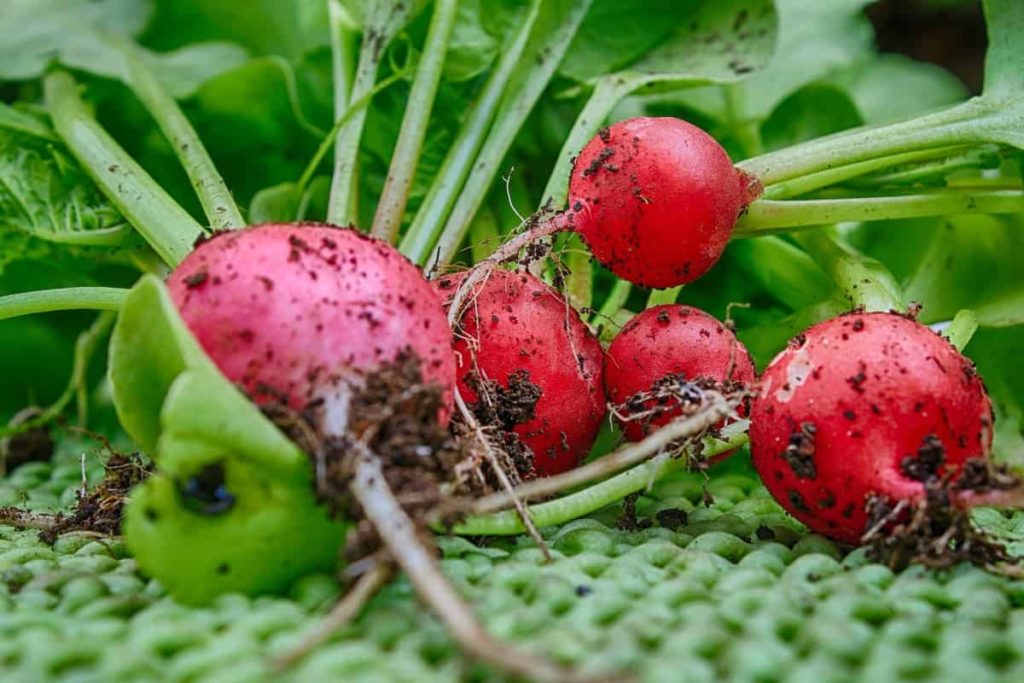Radish grows faster when they get the proper care. Remember when fertilizing them that they have only minor needs as far as nutrients are concerned. You should be more careful not to overfeed the Radishes to ensure they grow as they wish. One of the important things you should know about Radish is that it does not need heavy fertilization to grow and produce well. Let’s check out the best fertilizer for Radish.

The fact is that if you are known for the rapid growth and growth of these vegetables, it is usually enough to add nutrients to the soil before planting. Radish is difficult to grow in heavy soil, so gypsum may be necessary to help soil develop better structures. One way to do this is to work some powdered gypsum in the soil. This helps the soil particles to accumulate together and leave more space between the particles, water and nutrients can move better.
Nitrogen nurtures the growth of plant leaves. Phosphorus helps in several aspects of plant growth, including flowering, root development and water content, and energy transfer through plant structure. Potassium nurtures the growth of roots, which is crucial for healthy plant growth. A common problem with growing Radish is too much of some elements, usually nitrogen.
The results may include spindly roots, overly thick leaves, inferior flavor, and low levels of antioxidants in the mature Radishes. Nurture your Radish by providing low nitrogen soil which still contains a lot of organic material. Radish must be given a fairly loose, open soil so that the roots can develop easily.
Best fertilizer for Radish
Organic fertilizers for Radish
Bone meal
As root vegetables, Radish can benefit from bone meal fertilizers that are high in phosphorus. Bone meal also contains calcium, another nutrient that boosts the growth of roots.
Kelp meal
The kelp meal is full of micronutrients and will provide trace minerals to crops that will be used. Take organic manure, dry farmyard manure, or chicken pellets with the added seaweed and spread this into the soil gently before sowing. Alternatively, sow after a legume green manure, such as alfalfa.
In case you miss this: Growing Radish In Greenhouse – A Full Planting Guide

Compost manure for Radish
Farmyard manure
Manure is an excellent fertilizer that includes nitrogen, phosphorus, potassium, and other nutrients. Farmyard manure has a significant impact on the parameters of Radish growth and production.
Compost
Ideally work in compost or aged manure before sowing seeds to improve the soil.
Homemade and liquid fertilizers for Radish
Epsom salt
Radish, Turnips need a lot of sulfur to thrive. Epsom salts are soluble in extreme water, when diluted with water, and applied as a foliar spray can be absorbed quickly by the plant.
Fresh coffee grounds
Acid-loving plants such as Hydrangeas, Rhododendrons, Azaleas, Carrots, and Radishes can get a boost from fresh coffee grounds.
Eggshells
Crushed eggshells add precious calcium to the soil. Calcium is essential for cell development in all plants and helps plants build walls of healthy cells. Calcium is especially important for fast-growing plants to like Carrot and Radish as they rapidly deplete the soil around calcium.
Fish emulsion
Using high nitrogen fertilizers like fish emulsion will give you a lot of beautiful leaves in the short term, but your Radish roots may be small or deficient. Use low nitrogen fertilizer but do not completely exclude it. Fish and Kelp-based liquid fertilizers provide plants with a quick shot of nutrients, which is particularly important for fast-maturing crops like Radish as well as essential trace nutrients and plant growth hormones.
In case you miss this: Radish Seed Germination, Time, Temperature, Procedure

Natural fertilizers for Radish
Mulching with a thin layer of straw, untreated grass clippings, or compost is also helpful in controlling weeds and keeping moisture in the soil.
Commercial fertilizers for Radish
NPK ratio
- If you decide to apply commercial fertilizers, make sure you choose food that is low in nitrogen. Note that standard garden fertilizers often have a set of three numbers each representing or indicating how much nitrogen, phosphorus, and potassium it contains based on percentage.
- If you are looking for Radish fertilizer, make sure you pick low nitrogen content. Check whether the first number in commercial fertilizer is low as it means its nitrogen content is also low. If the indicated number is 20-10-5, avoid this fertilizer as much as possible because it means nitrogen is more than the percentage that Radish can handle safely.
- Before planting your Radish, you should work as a fertilizer of all purposes in the soil. Apply about 0.45 kg of 16-20-0 or 10-10-10 fertilizer per 100 square feet of soil.
- If you don’t want to use commercial fertilizer, the same Radish plant can be achieved by working 4.5 kg of compost or manure in the soil instead. If you want to provide a little extra Radish plant food to kick your growth in high gear, however, try adding about 1/4 cup of nitrogen-rich fertilizer per ten-foot row to boost the growth of sharp leaves, especially if you plan to use the greens.
- Radish is a fast-growing crop, so the soil should be much richer in plant nutrients. Add farmyard manure 25 to 40 tons, nitrogen 18 to 50 kg in the form of ammonium sulfate, phosphorus 50 kg in the form of superphosphate, and 50 kg in potash in the form of Muriate of potash for a hectare. Farmyard manure should be well mixed at the time of preparation of the field while a full dose of potassium, phosphorus, and one-half of nitrogenous fertilizers can be applied in rows before sowing. The remaining half of nitrogen fertilizers should be applied as irrigation as well as a top dressing when plants start growing vigorously.
In case you miss this: Growing Hydroponic Radish, Process, Requirements

Symptoms of nutritional deficiency in Radish and their treatment
- Calcium – Radish leaves show interveinal chlorosis, fail to develop the roots. To overcome this use foliar sprays 2% calcium chloride.
- Magnesium – The older leaves show chlorosis. The veins remain green. The roots are small. Old leaves have marked interveinal chlorosis. To overcome this use foliar spray with 2% mg sulfate.
- Iron – Young leaves show chlorosis. Foliar spray with 0.4% ferrous sulfate and 0.2% lime.
- Manganese – Radish is extremely sensitive to the lack of manganese. Apply Manganese sulfate at 5 to 50 kg per hectare.
- Zinc – The growth of roots is poor. Plant growth is poor. Apply zinc sulfate 10 kg per hectare.
- Boron – Leaves show yellow or purple-red blotches. Leaves are smaller than normal. Foliar spray with 0.1% borax solution three weeks after sowing. Application of Boron at 2.5 kg per hectare.
Radish fertilizer schedule
While garden bed preparatio
You can apply fertilizers to the garden beds before planting your Radish. There will be no need to re-compost garden beds under Radish during spring or fall, especially during preparation and before sowing seeds. At this particular stage, you can use organic matter as fertilizer. Convert compost and fertilizer into loose upper 6 inches of soil and water until the soil is moist.
During the start of their growth
You can also give fertilizer to Radish once it starts growing. You can do top dressing after the first seedling appears but only if you have not applied any fertilizer on the soil before. It would be better to use complex fertilizer than simple minerals when you plan to apply one during this phase.
In case you miss this: Radish Harvesting; Radish Plant Care; Radish Facts

During actual growth
You can also apply proper fertilizer directly once in the growing season. By doing so, you can easily make adjustments to plant development if you were able to detect some problems.
How to fertilize Radish in pots
Ideally, before planting seeds, you should add slow-release fertilizer to the potting soil. Adding compost or aged manure is a suitable alternative if you prefer not to use granular fertilizer. Since too much nitrogen can cause leaf growth and a top of lush Radish, it is better to feed Radish with a low nitrogen formula like 5-10-10.
This NPK ratio is not available, you can also feed common purpose fertilizers like 20-20-20. Once your Radish turns two weeks and doesn’t perform well, you can re-compost with a weak dose of water-soluble fertilizer. Also, if you are missed adding anything at the time of planting, fertilize your Radish regularly every 10 to 14 days with 5-10-10 or 5-10-5 water-soluble fertilizer.
Frequently asked questions about fertilizers for Radish (FAQ)
Why is my Radish growing long and thin?
Radish will become long and thin in response to competition with hot weather, unsuitable soil. Too much nitrogen in the soil can also cause Radish to become long and thin.
In case you miss this: Growing Radish, Planting, Care, Growth Stages

Why are my Radishes all leaves no Radish?
It’s due to a lot of nitrogen fertilizer. Excessive nitrogen fertilizer can encourage beautiful Radish tops with very little Radish underneath.
Why is my Radish hollow?
Too much nitrogen in your soil is usually the reason that Radish doesn’t bulb but gets tops with large leaves. Also planting seeds very deep will not produce Radish bulbs.
How do I grow up my Radish bigger?
To get the large Radish, not only large but healthy select a patch of garden that receives at least six hours of direct sunlight a day. Dig the soil deeply and add lots of composted organic material, such as mushroom compost and rotten leaves.
- Flower Garden Designs and Layouts for Beginners
- Planting and Spacing Techniques in Papaya: A Beginner’s Guide
- Growing Gold: Essential Techniques for Planting Pineapples
- How to Make Kalanchoe Plant Bushy: Home Remedies and Solutions
- 11 Reasons Why Your Gardenia is Not Blooming: Home Remedies and Solutions
- Eco Elegance: The Guide to Designing a Drought-Tolerant Landscape
- Gardening on a Slope: Strategies for Hillside Landscaping
- Nourish and Flourish: Top Organic Mulches for Thriving House Plants
- Everything You Want to Know about Indian Mogra Flower: Discover Uses and Growing
- Green Thumb Success: Expert Tips for Cultivating Greenhouse Pumpkins All Year Round
- Maximize Growth & Flavor: The Ultimate Guide to Companion Planting in Herb Gardens
- How to Control Rhododendron Problems Naturally: Home Remedies and Organic Ways to Fix Them
- Natural Magic: The Remarkable Benefits of Cinnamon for Plants
- Best Steps to Revive Dying Tulip with Natural and Organic Treatment
- 10 Reasons Why Your Angel Trumpet is Not Blooming: Remedies and Treatment
- How to Fix Periwinkle Leaf and Flower-Related Problems: Natural Remedies and Solutions
- How to Fix Zinnias Leaf and Flower Problems: Discover Natural and Home Remedies
- Organic Steps to Induce Lemon Tree Flowers: A Comprehensive Guide
- Bloom Booster: Crafting the Perfect Homemade Bougainvillea Fertilizer
- Optimizing Growth: A Guide to Applying NPK Fertilizer for Potted Plants
- 10 Best Homemade Fertilizers for Rubber Plant: DIY Recipes and Application Method
- How to Boost Female Pumpkin Flowers: Effective Steps for More Flowers and High Yields
- Transform Your Indoor Garden: Top Benefits of Pink Salt for Houseplants
- 10 Best Homemade Fertilizers for Peacock Plants (Calathea): Easy DIY Guide
- Unlock Blooms: 9 Reasons Why Your Potted Chrysanthemum is Not Blooming
- 8 Reasons Why Your Potted Hibiscus is Not Blooming: Fix it with Simple Solutions
- Unlock Blooms: 9 Key Reasons Your Potted Frangipani Won’t Flower
- 10 Reasons Why Is My Ice Plant Not Blooming: Remedies and Treatment
- 10 Reasons Why My Potted Hydrangea Not Blooming: Treatment and Remedies
- 10 Reasons Why is My Wisteria Not Blooming: Remedies and Treatment
- 10 Reasons Why is My Goldfish Plant Not Blooming: Remedies and Treatment
- Maximize Your Space: Ultimate Guide to Balcony Gardening with Grow Bags
- 10 Reasons Why Your Iris is Not Blooming: Remedies and Treatment
- 10 Reasons Why Your Anthurium Plant is Not Blooming: Treatment and Remedies
- 10 Reasons Why Your Aquaponic Plants Are Not Flowering: Remedies and Treatment
- 10 Reasons Why Your Agapanthus is Not Flowering: Remedies and Treatment